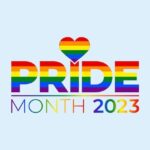When responding to a recent student email questioning how to calculate averages in a database, I almost made a big mistake. The mistake wasn’t in the calculation, but in the presentation. I had planned to demonstrate how the data, in this case average student grades, could be grouped by gender, which I had classified as Female and Male. That is when I realized that limiting the table to two binary gender choices is no longer appropriate. A recent Gallup poll found that 1/6 of the Generation Z adults identify as LGBTQ+ (Schmidt, 2021). That is about 17% of our student population which means it’s time to rethink how we approach the topic of gender.
A portion of PTC students no longer identify as purely Male or Female. Significant thought has helped them determine their gender identity. As faculty, it is not necessary to understand our students’ choices, we must simply respect them. Respecting gender identity is one way to make the classroom more inclusive.
In addition to respecting the students gender identity, we need to respect the entire gender discussion. In 2014, a meme circulated with a picture of a US Apache Helicopter and the phrase, “I sexually identify as an attack helicopter” (I sexually identify as an attack helicopter, 2014). Quite often, humor is designed to belittle an attribute of a person or group. This meme may offend those who have decided on a gender that is different from their biological sex. In the classroom, if the topic of gender is broached, be sure to handle it delicately and respectfully.
The need to recognize and respect gender identity extends beyond schools and the faculty who teach in them. It is the responsibility of all people. In support, the United States has added a third gender choice on American passports: Male, Female, or a non-binary choice listed as X (Passports, 2021). A citizen no longer needs to provide medical documentation supporting the gender decision.
After my near mistake with the email mentioned above, I switched the example to average by US state. Instead of two lines of averages, I had 50. The example was just as clear as with gender, but without the potential to insult or alienate my students. I then wondered whether an official list of gender terms exists.
I started with a simple Google search: “officially recognized genders”. After hours of attempted refinement, I found that a concrete list was not available. The terms varied by source and while deemed acceptable in one location, were offensive in another.
I then took my search to the medical professionals. The American Psychological Association proved to be a good resource for understanding gender identity, defining it as “a component of gender that describes a person’s psychological sense of their gender” (Gender, 2021). They elaborate that the gender identity is often a “deeply felt” sense of their gender identity. Each person’s gender identity is unique, and there is no correlation between gender identity and sexual orientation. To learn more, visit https://apastyle.apa.org/style-grammar-guidelines/bias-free-language/gender.
The results of my research did highlight certain consistent terms. The source, MasterClass (Morse, 2020), provided a brief list of terms that I paraphrase here:
Cisgender: This is what my grandmother would call “traditional.” A person who identifies with the biological sex assigned at birth.
Gender-fluid: This gender identity is not fixed, may change over time, and at times an individual may identify with multiple genders at once.
Non-binary: Someone who does not follow the “traditional” Male-Female binary choice. This person may identify as male, female, both, or neither. Often the term “genderqueer” is a synonym.
Questioning: A person who is attempting to discover their gender identity. Considering our student body, these students are the most fragile and require lots of support and understanding from the faculty and staff. It is a tough time.
Transgender: A person whose gender identity does not match the biological sex assigned at birth. Some transgender individuals choose to undergo treatments to change their bodies to match the gender with which they identify.
There are many more terms. If a student presents a term that you are unfamiliar with, gently ask the student to define it in their own words. Assure the student that your questions are only designed to help you better understand them and treat them with respect. More than likely, if properly approached, the individual will happily help you to understand their gender identity.
I never want to intentionally alienate or insult anyone, and am glad I recognized my flawed gender example before sending the email response. I will be more mindful of my examples and my use of gender in the future. Where appropriate I will include different gender identities in my sample data, and in my assignments. I encourage others to do the same.

Lee Cottrell
Faculty – School of Information Systems & Technology, DEI Taskforce Co-Chair
References
Gender. (2021, 7 31). Retrieved from apa.org: https://apastyle.apa.org/style-grammar-guidelines/bias-free-language/gender
I sexually identify as an attack helicopter. (2014, March 17). Retrieved from knowyourmeme.com: https://knowyourmeme.com/memes/i-sexually-identify-as-an-attack-helicopter
Morse, E. (2020, December 7). Gender Identity Guide: 15 Gender Identiy Terms Defined. Retrieved from masterclass.com: https://www.masterclass.com/articles/gender-identity-guide#15-gender-identity-terms
Passports. (2021, July 31). Retrieved from transequality.org: https://transequality.org/know-your-rights/passports
Schmidt, S. (2021, February 24). 1 in 6 Gen Z adults are LGBTQ+. And this number could grow. Retrieved from washingtonpost.com: https://www.washingtonpost.com/dc-md-va/2021/02/24/gen-z-lgbt/
Sopelsa, B. (2021, June 30). US to add third gender option to American passports. Retrieved from nbcnews.com: https://www.nbcnews.com/nbc-out/out-politics-and-policy/us-add-third-gender-option-american-passports-rcna1314





